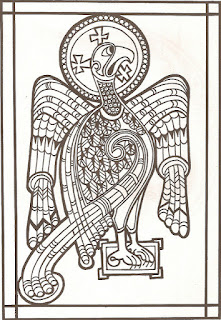 |
| ©Cindy Thomson |
There were regular times of prayer. They even woke in the middle of night to a call for a prayer. The prayers were certainly for themselves and their community—for spiritual growth and a desire to be closer to God, but what I tended to overlook when I began researching was the monks’ prayers for everyone else, for the whole world, for all of God’s children.
What a difference these communities made (and continue to make) because they devoted so much time for prayer. While the rest of the world bustles about, scarcely giving thought to the One who created us, there were (and are) men and woman interceding for us.
I was reminded of this just today when I read a Facebook message from a “friend” I have never met in person. She went to Lindisfarne on a spiritual retreat and while she was there she prayed for me, knowing that I have a great desire to travel to her side of the pond. I didn’t know she was doing this. I was probably asleep when she prayed due to the time difference. She was carrying on the work of those ancient monks. I want to do that too. I’m praying for you, right now as I write this.
Lord, Creator of all that is seen and unseen, bless my readers in their pursuits today. Make them aware of your touch. You created us. It is Your breath that we breathe, Your love that we share, Your wisdom that we seek to use in our work. Thank you for bringing us together through prayer. It doesn’t matter whether I know their names or their faces. They are Your children and my brothers and sisters, and I commend them to Your care today. Amen.
The LORD is a refuge for the oppressed,
a stronghold in times of trouble.—Psalm 9:9 NIV
a stronghold in times of trouble.—Psalm 9:9 NIV


















